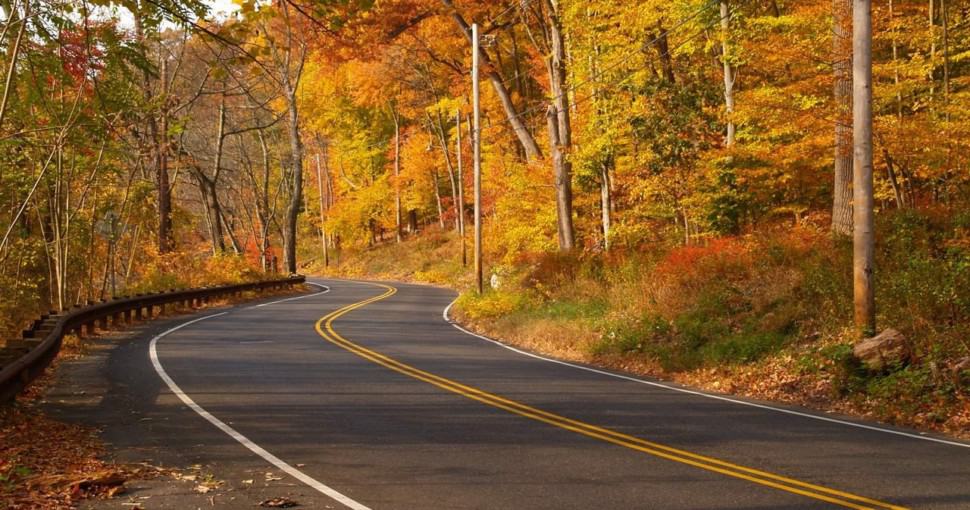When you think of New Jersey, the most heavily populated state in the country, your first thought might not be about its trees. It may come as a surprise, but New Jersey is home to a diverse range of 49 native tree species, from rural pine forests to tree-shaded sidewalks in the city.
Contents
- 1. Oak (Quercus)
- 2. Walnut (Juglans)
- 3. Hazel Alder (Alnus serrulata)
- 4. Tulip Tree (Liriodendron tulipifera)
- 5. Silver Bell (Halesia)
- 6. Sweet Birch Tree (Betula lenta l.)
- 7. Flowering Dogwood (Cornus florida)
- 8. Black Spruce (Picea mariana)
- 9. American Holly (Ilex opaca)
- 10. Red Oak (Quercus rubra)
- 11. American Beech (Fagus grandifolia)
- 12. American Elm (Ulmus americana)
- 13. American Linden (Tilia americana)
- 14. American Planetree (Plantanus occidentalis)
- 15. Hickory (Carya)
- 16. Black Cherry (Prunus serotina)
- 17. Mountain Laurel (Kalmia latifolia)
- 18. Pitch Pine (Pinus rigida)
- 19. Bald Cypress (Taxodium distichum)
From the age of colonial settlement to the present day, New Jersey’s forests have been a vital source of natural resources. The Garden State has forests covering 45% of its landmass, and these landscapes differ considerably from the coastal plain to the highlands. These incredibly diverse forests support internationally valuable ecological populations, wildlife habitat, forestry resources, quality of water, and recreational activities.
The forests are not evenly distributed across the region; for instance, Sussex County is 68% forested, while Hudson, Essex, and Union Counties have the lowest forest cover. Forests are primarily found in the state’s northern regions, as well as the Pine Barrens in the Atlantic, Ocean, and Burlington Counties in the south. The Pine Barrens also stretch into Cape May, Cumberland, Camden, and Gloucester counties, which are less forested.
The increase of New Jersey’s forest resources has substantially surpassed losses as a consequence of tree removal via cutting and mortality over the last 50 years. New Jersey is one of the few states in the US that has two official trees. The Northern Red Oak is its state tree, while the Flowering Dogwood tree serves as its memorial tree. The Maple tree is also common in New Jersey.
Here are some of the most common trees found in the Garden State:
1. Oak (Quercus)
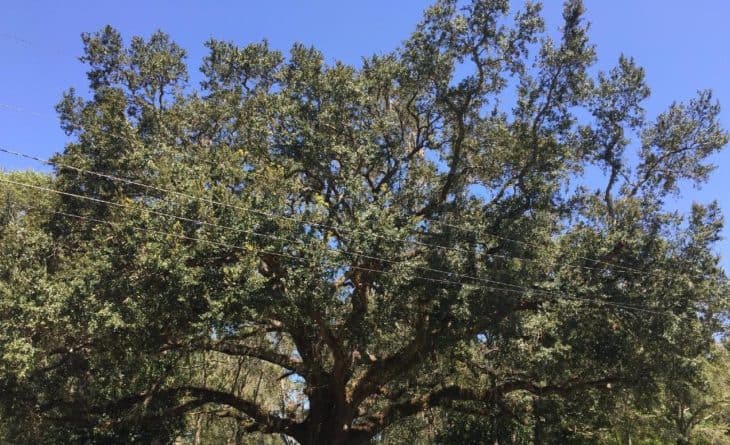
There are eight oak species native to New Jersey, namely, Scarlet, Water, Southern Red, Willow, Bear, Black Jack, White, and Chestnut Oaks. All feature the distinctive elongated, lobed leaflets, besides the Chestnut and Willow oaks. Occasionally the lobes finish in sharp ends, while other times, they are much more rounded. The acorns of these native oaks are typically oval and easily recognizable for the bowl-shaped caps.
2. Walnut (Juglans)
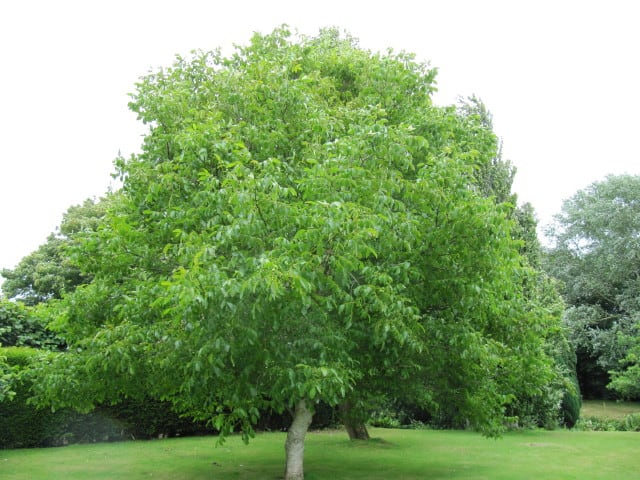
Black walnut trees are known for their delicious nuts covered in spherical, fragrant, lime-green hulls, as well as their feather-like or pinnate leaf patterns. They grow up to 50 to 100 feet and bloom in late spring with yellow-green flowers. They produce edible nuts in autumn, which fall to the ground, making a mess. Its roots produce juglones, which can deter the growth of other plants.
3. Hazel Alder (Alnus serrulata)
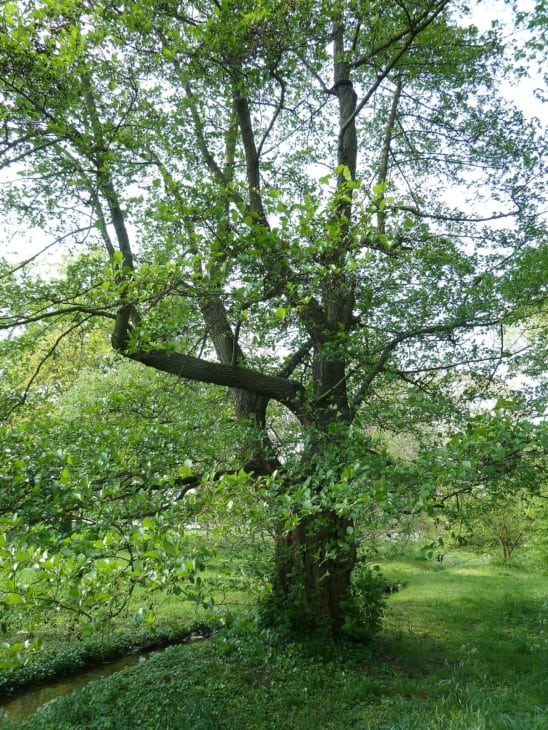
The Hazel Alder tree is a relatively small tree, reaching up to 10 to 20 feet. In spring, it produces brownish-yellow flowers. It features simple but impressive leaves with a dark green surface, pale underside, and parallel veins. Since it is tolerant of very wet soils, it is commonly found around riverbanks and swampy areas, even in Florida and Texas.
4. Tulip Tree (Liriodendron tulipifera)
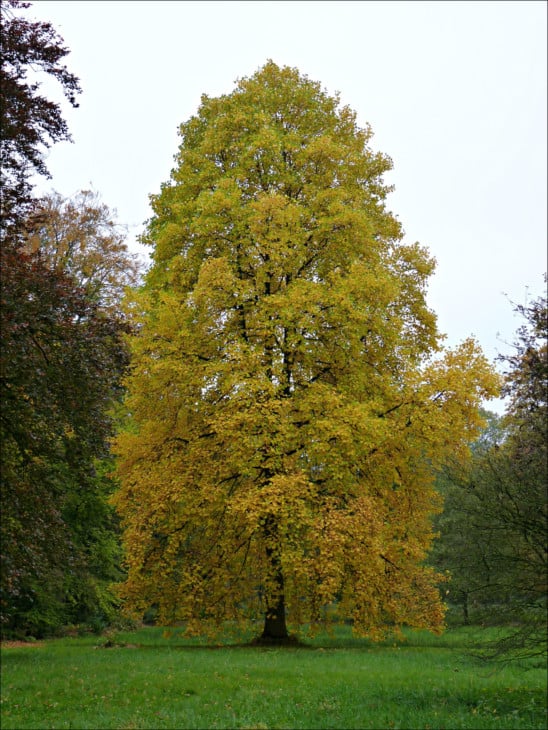
Native to New Jersey, this exotic tree is best known for its aromantic yellow cone-like flowers and uniquely tulip-shaped leaves. It blossoms in spring, and its leaves turn a vibrant yellow in fall, adding color to any landscape all year round. It is commonly found in and around pine forests in New Jersey and outside the Pine Barrens.
5. Silver Bell (Halesia)
The Silver Bell is a beautiful but short tree with a height of 30 to 40 feet, giving bright yellow leaves in autumn and silvery, bell-shaped flowers in spring. It grows well inorganic, moist, well-drained soils and is commonly used as an accent tree near patios or decks or as a specimen tree. It is well-known for remaining disease-free despite environmental factors.
6. Sweet Birch Tree (Betula lenta l.)
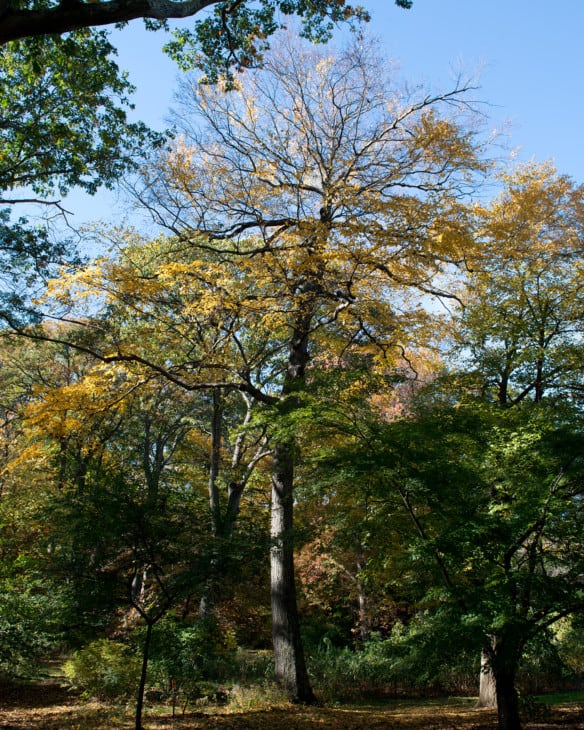
The bark of the Sweet Birch tree is a gleaming red-brown color, while the leaves are yellow. Although it blooms in the spring, it is most beautiful in the early fall. This tree grows to a height of 40 to 50 feet and requires at least 6 hours of direct sunlight every day. It prefers damp soil and is commonly found in rocky places.
7. Flowering Dogwood (Cornus florida)
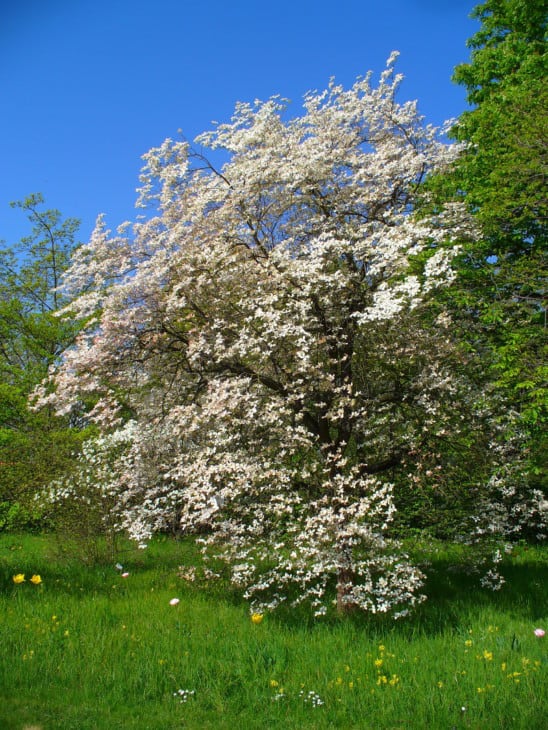
The Flowering Dogwood grows to be 20 to 25 feet tall and produces red, yellow, deep-purple, and maroon leaves in autumn. It also produces glossy red berries in the winter that attract wildlife and birds. Dogwood trees are known for their attractiveness and are the state trees in Virginia and Missouri as well.
8. Black Spruce (Picea mariana)
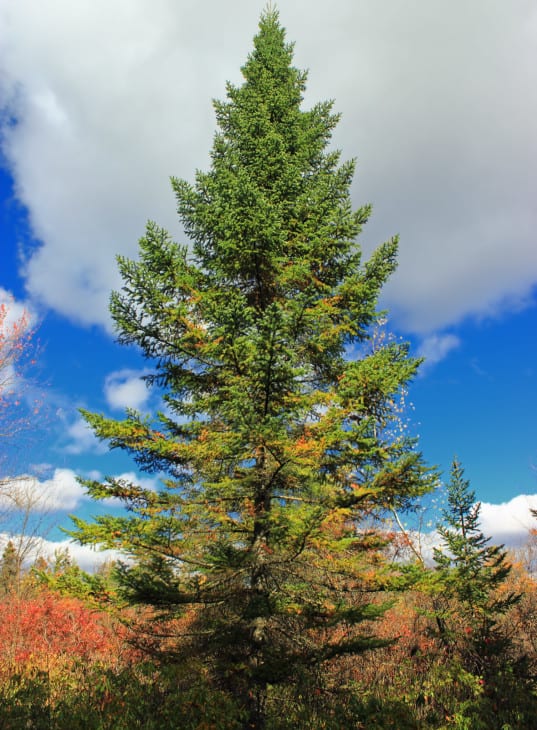
The Black Spruce, often known as the Bog or Swamp Spruce because of its adaptability for moist environments, is an Evergreen with year-round foliage. This tree may reach 30 to 50 feet high and thrives in colder climes. The Black Spruce tree’s bark is dark grey and scaly. The needles are firm and blue-green in appearance, with a pointed crown at the top.
9. American Holly (Ilex opaca)
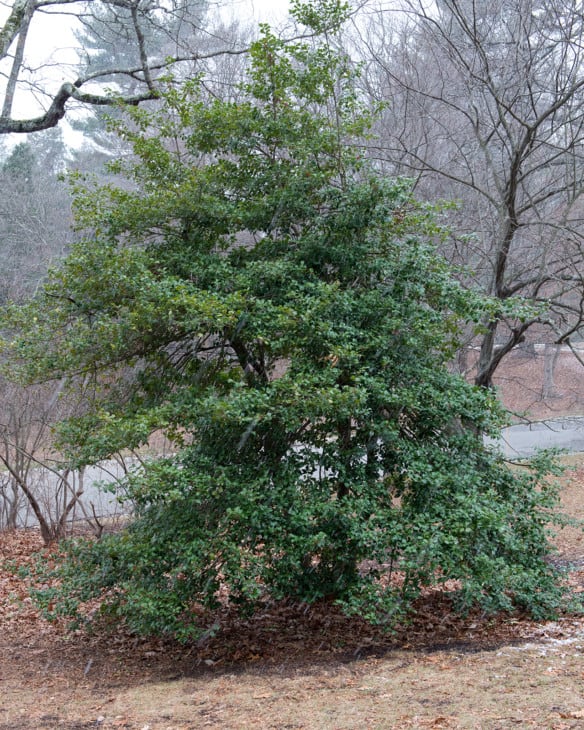
Holly trees can reach a height of 50 feet and can be pruned to seem like a single tree, a hedge, or even a wall. Their vibrant red berries add brightness to any landscape and can be used in Holiday Decorations. Its deep green leaves are vibrant all year round. It is also found in Massachusetts, Florida, Connecticut, and Texas.
10. Red Oak (Quercus rubra)
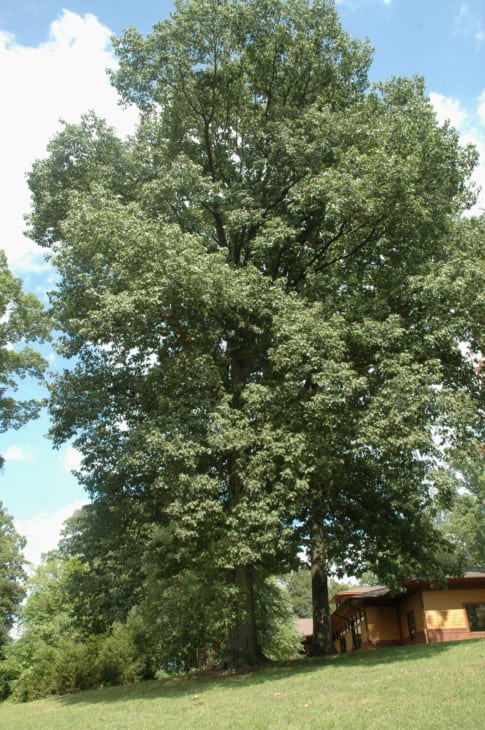
The Red Oak is New Jersey’s official state tree and is commonly found on the East Coast, particularly in Minnesota and Alabama, all the way to Canada. It grows up to 90 to 100 feet and has a symmetrical spread. Its bark has shiny stripes down the center, and its leaves turn a gorgeous scarlet color in the fall.
11. American Beech (Fagus grandifolia)
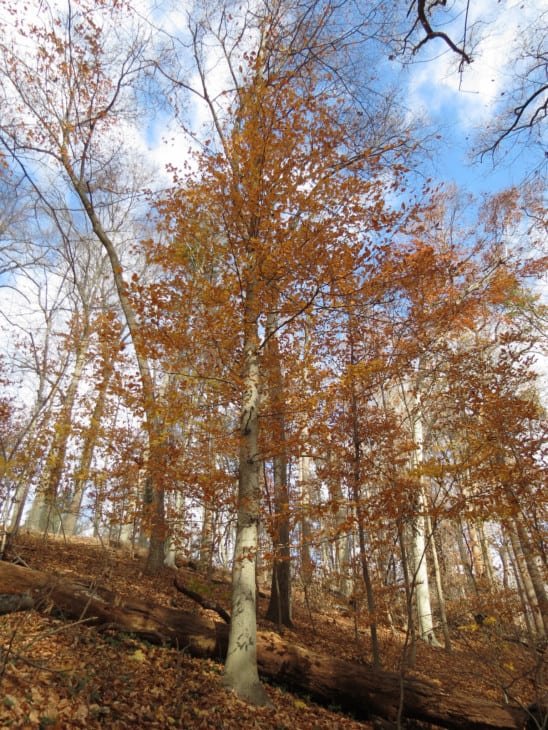
Reaching a height of 50 to 70 feet tall, the American Beech is a tall deciduous tree with smooth, light-gray bark and dark green leaves that are strongly veined and serrated. In autumn, the foliage turns a bronze color and stays on the tree deep into the cold season. It blooms in April-May with yellowish-green flowers.
12. American Elm (Ulmus americana)
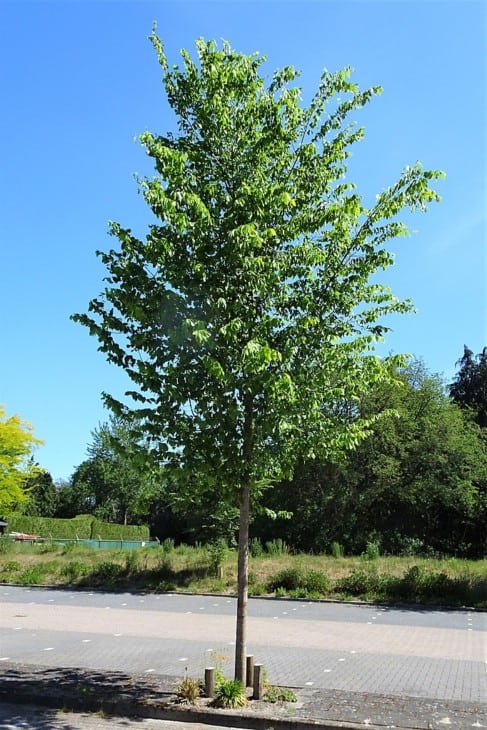
Native to eastern North America, the American Elm can be found in Montana, Florida, Texas, and New Jersey. They are fast-growing trees, growing up to 50 feet within 20 years. The broad, lustrous, double-toothed leaf turns a yellowish to deep green tint as it matures. The bark has a brittle feel and is grey and deeply furrowed.
13. American Linden (Tilia americana)
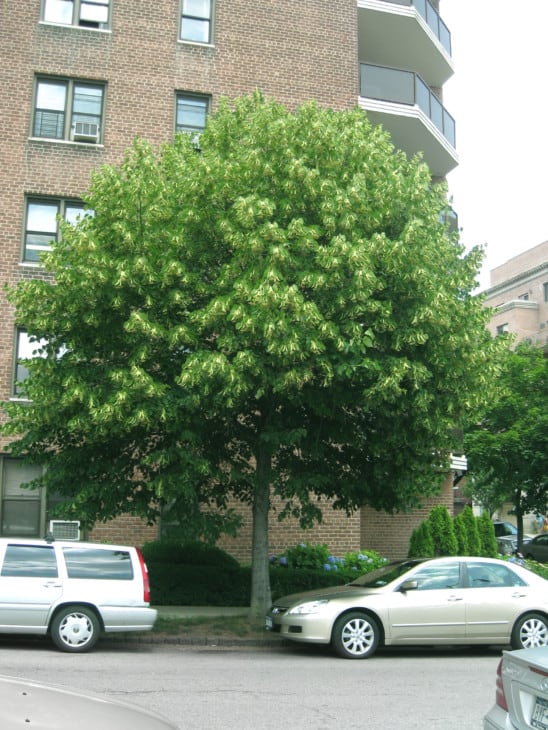
Growing up to 60 to 80 feet, the American Linden tree blooms with fragrant, yellow flowers in June. The fibrous interior bark and aromatic blooms of this American native have been used for millennia. It has one-of-a-kind flowers as well as huge, heart-shaped leaves. Not only is it an excellent source of honey, but it is also used in perfumes and making olive oil.
14. American Planetree (Plantanus occidentalis)
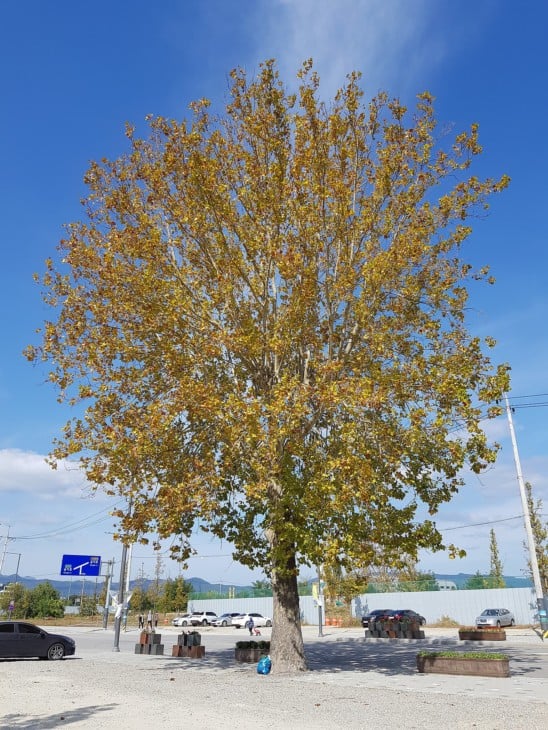
Also known as the American Sycamore, the American Planetree has large, maple-shaped green leaves that turn brown in the fall. It is a wide-canopied deciduous tree with bark sloughing off its trunk in scales or plates, revealing the white bark underneath. It prefers moist soils and grows up to 75 to 100 feet.
15. Hickory (Carya)
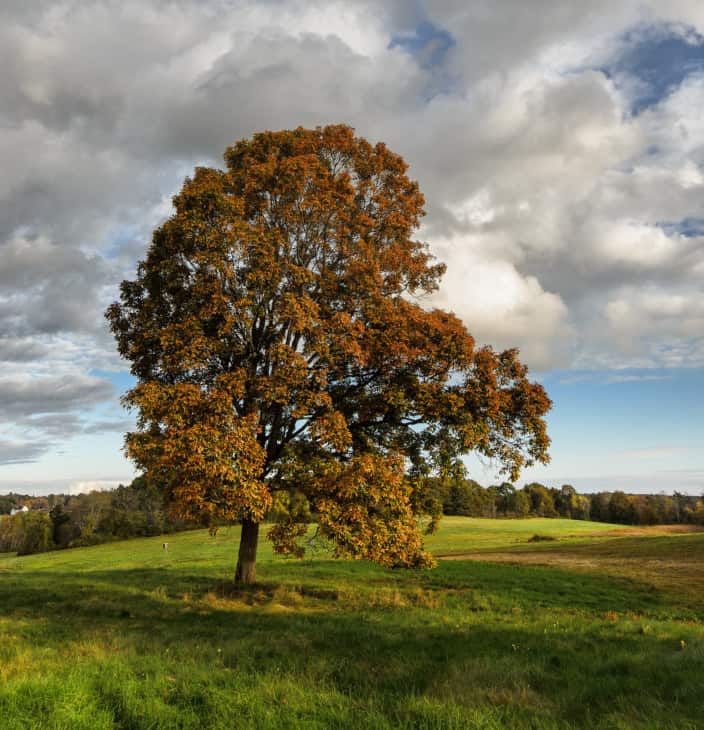
At maturity, Hickory trees have clean, upright trunks with greyish scaly bark. They have a sprawling crown that can reach heights of more than 100 feet. The fruit is a nut with a semi-woody husk around it. These trees can be found throughout the eastern and central parts of the United States. Its sturdy wood and delectable nuts make it attractive for a variety of purposes.
16. Black Cherry (Prunus serotina)
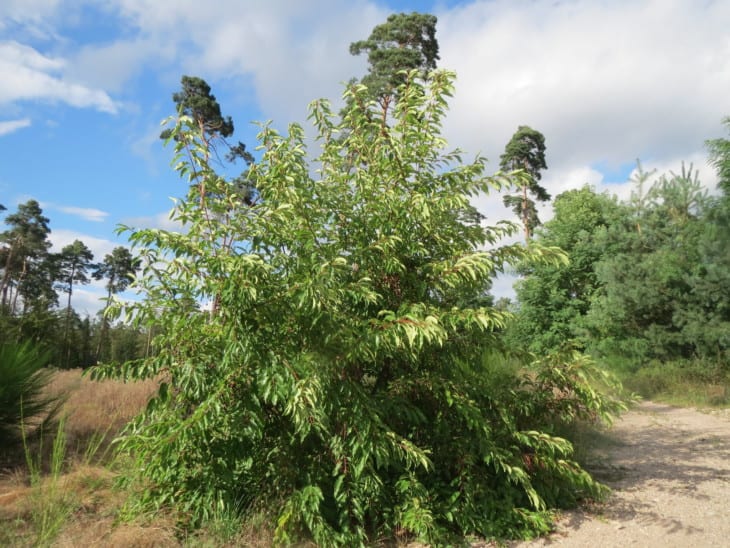
Black Cherry is a flowering shade tree that grows to be a medium-sized, wildlife-friendly tree. In May, small, tasty berries bloom, succeeded by white flowers. From August to September, the fruit turns from red to black as it ripens. The fall foliage is a mix of yellow and crimson. As a fast-growing tree, it grows up to 50 to 80 feet.
17. Mountain Laurel (Kalmia latifolia)
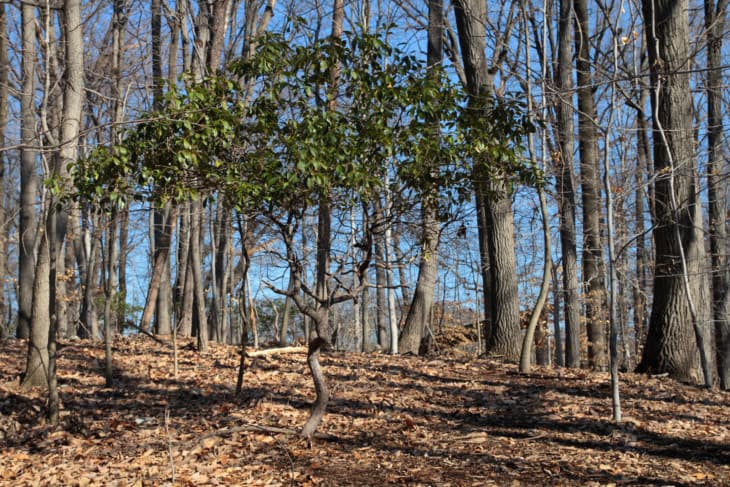
Mountain Laurel is an evergreen shrub with wide leaves, growing up to 5 to 15 feet tall. Late in the springtime, the shrub is covered in cup-shaped white to pink blossoms with deeper pink to purple patterns. In addition to New Jersey, it can be found along the east coast, from Maine to Florida, and even Indiana.
18. Pitch Pine (Pinus rigida)
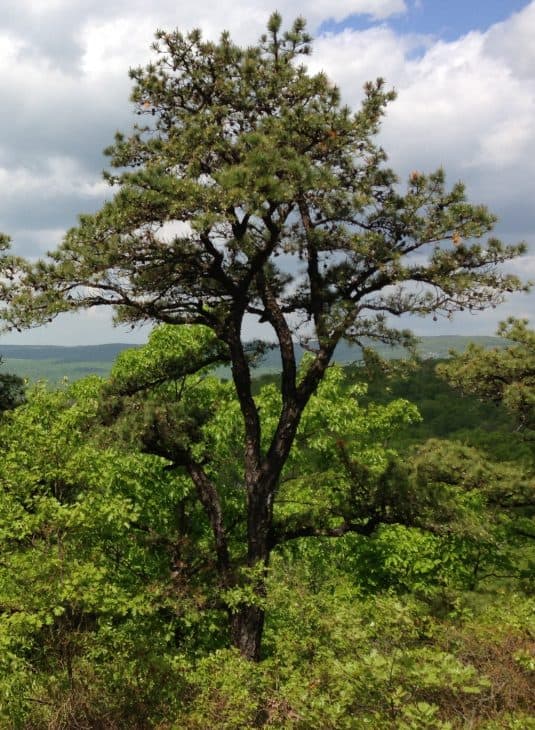
The Pitch Pine tree is the most common pine tree found in New Jersey’s Pine Barrens. The evergreen tree, sometimes known as torch pine, is exceptionally capable of surviving forest fires due to its thick bark and scruffy exterior. It can reach a height of 60 feet and features yellow-green needles that come in threes.
19. Bald Cypress (Taxodium distichum)
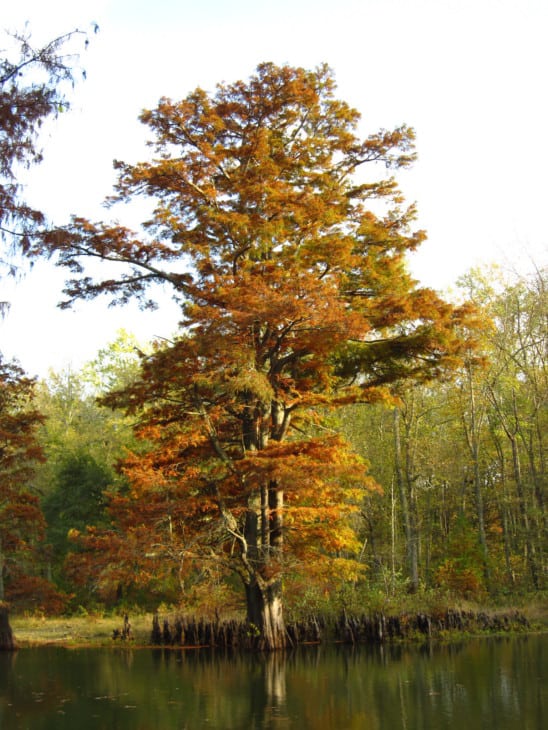
The Bald Cypress is the rarest native tree in New Jersey, reaching up to 50 to 70 feet tall. It is a deciduous tree that grows to be pyramidal in appearance. Before falling, the leaves turn a yellowish-brown color. Some birds are attracted to its little seeds. Bald Cypress thrives in moist environments, although it may also thrive in drier ones.

